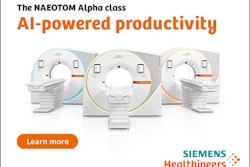Radiology reports that make use of a standardized "category S" template for incidental findings on low-dose CT (LDCT) for lung cancer screening help primary care providers better manage patient care, researchers have reported.
The study results could help support nonradiologists as lung cancer screening becomes "embedded in clinical practice," wrote a team led by Yukiko Kunitomo, MD, of Johns Hopkins University in Baltimore. The research was published February 9 in Chest.
"Our results suggest that [primary care providers] are not readily familiar with incidental finding management guidelines and frequently rely on radiologist recommendations to inform next steps," the authors reported. "Standardized Category S reporting may help patients receive guideline-adherent care, mitigate the decision-making burden for primary care providers, and avoid costs of unwarranted testing."
Annual lung cancer screening with low-dose CT (LDCT) is recommended by the U.S. Preventive Services Task Force (USPSTF) for those at risk of the disease. Yet screening for lung cancer carries a high prevalence of non-lung-cancer-related incidental findings, and although the Lung CT Screening Reporting and Data System (Lung-RADS) metric has a category (Category S, a reporting template developed by the Yale Lung Screening and Nodule Program) for incidental findings, it doesn't offer standardized guidance for how to handle them.
The American College of Radiology (ACR) crafted a guideline for dealing with common nonpulmonary incidental findings -- such as coronary artery calcifications, thyroid nodules, aortic abnormalities, renal lesions, lymphadenopathy, and adrenal nodules -- which tend to be under Category S in the LI-RADS system. Kunitomo and colleagues investigated the impact of physicians' use of this category for incidental findings flagged on LDCT.
Their work consisted of a survey of 30 primary care physicians, each of whom read 10 radiology reports that included five different LDCT exams; at least one of these exams contained a nonpulmonary incidental finding (i.e., 2 thoracic aortic abnormalities, 1 adrenal nodule, 4 renal lesions, and 1 thyroid nodule). The exams that contained an incidental finding were reported by a radiologist twice, once with LI-RADS alone, then a second time using LI-RADS and a standardized Category S reporting template. The primary care physician readers were blinded to whether the Category S template was used and asked to describe their recommended management for any incident findings.
The investigators found that the Category S reporting category template improved the likelihood that primary care providers would order appropriate management for incidental findings on LDCT, with an odds ratio of 4.68 (with 1 as reference) compared to management produced by reports that did not include the Category S template.
| Adherence to incidental finding management guidelines with and without Category S reporting template | ||
|---|---|---|
| Probability correct | ||
| Incidental finding type | Without template | With template |
| Adrenal nodule | 6.7% | 3.3% |
| Aortic abnormality | 16.7% | 85% |
| Renal lesion | 71.7% | 98.3% |
| Thyroid nodule | 86.7% | 100% |
| All combined | 51.7% | 83.3% |
The findings could improve patient care, the team explained, as 80% of primary care physicians who participated in the research noted that they "never or almost never" personally review LDCT images. In fact, 73% of these physicians stated that radiology report recommendations informed their subsequent management of LDCT incidental findings.
"[Our results] suggest that standardized incidental findings reporting in conjunction with Lung-RADS may be useful in providing guideline-consistent recommendations to practitioners ordering lung cancer screening LDCTs, and merits further investigation," the investigators concluded.
The complete work can be found here.




















